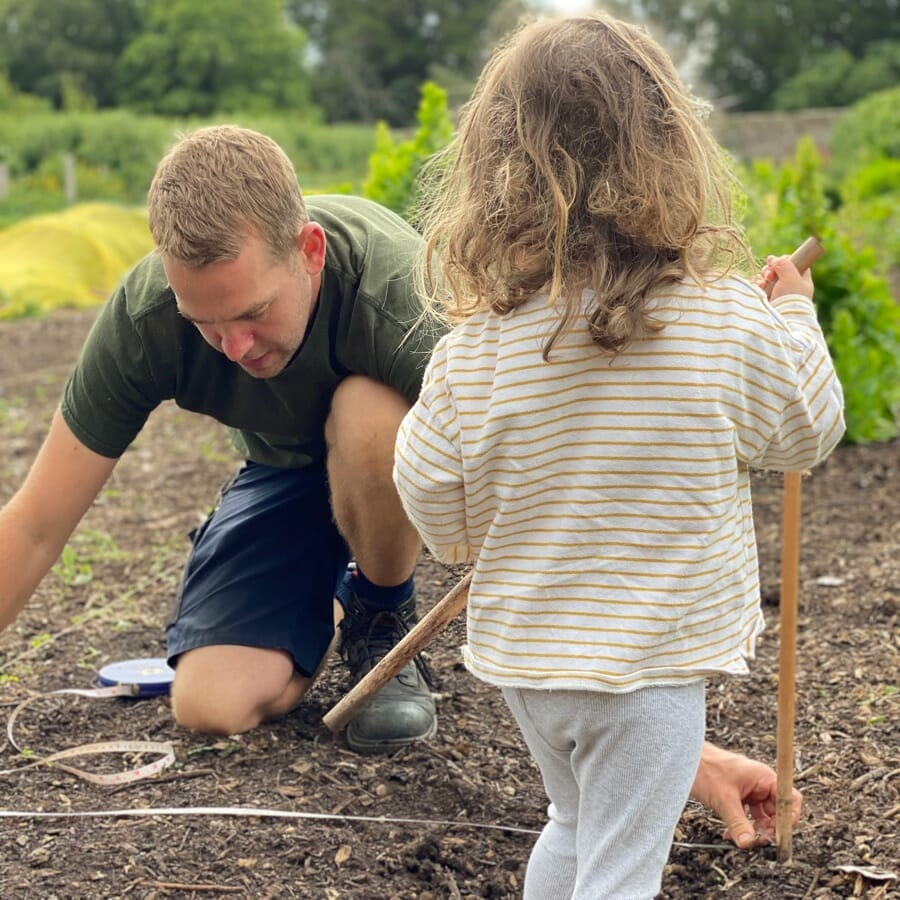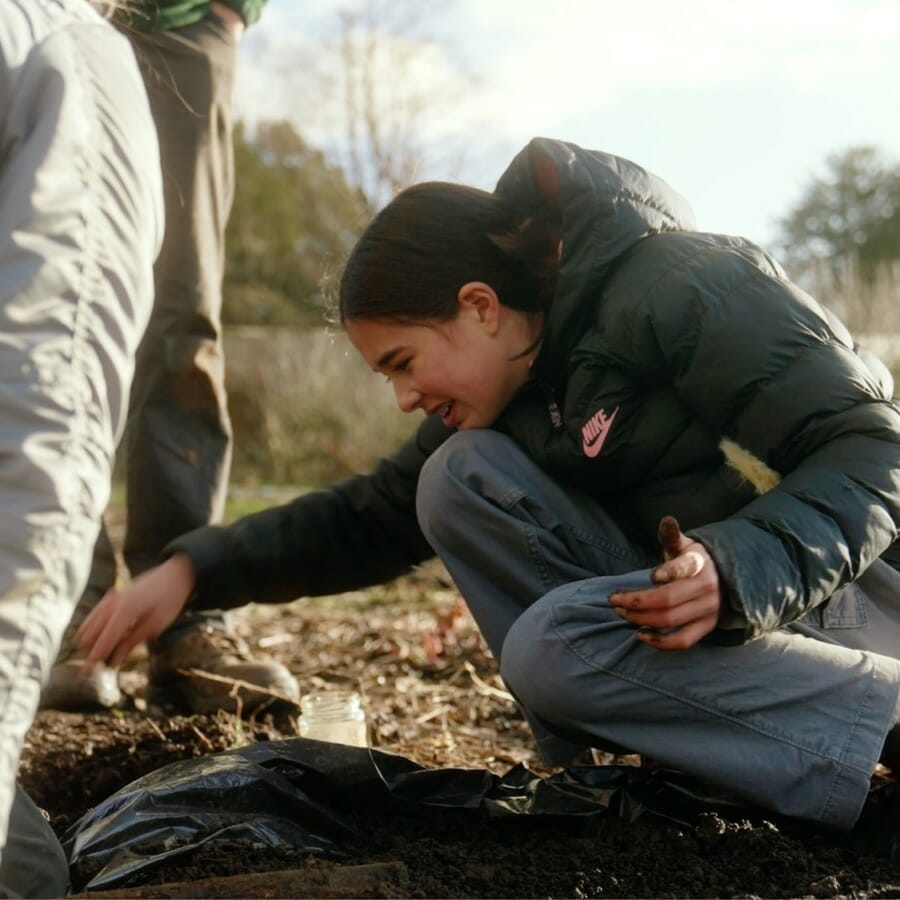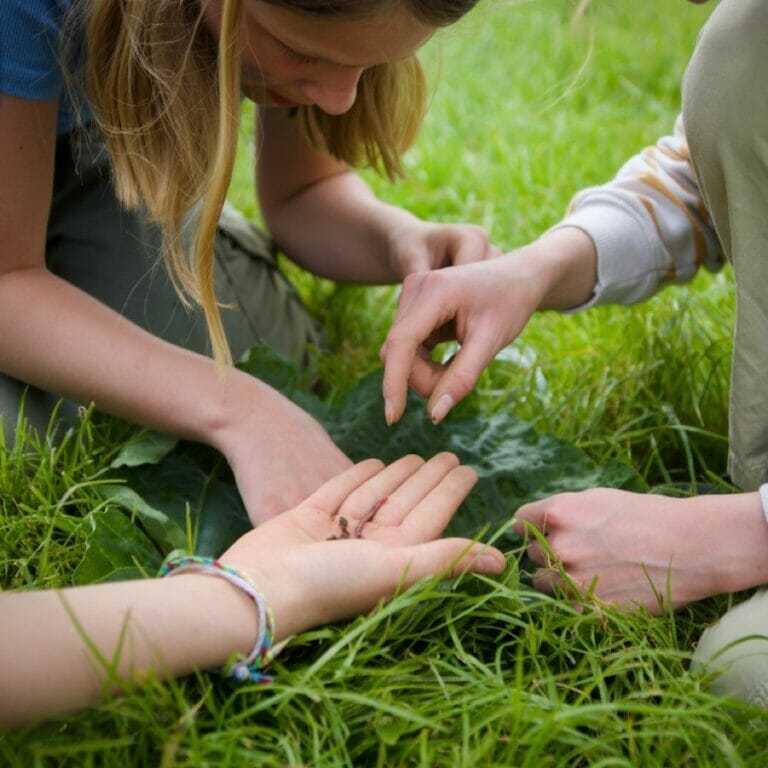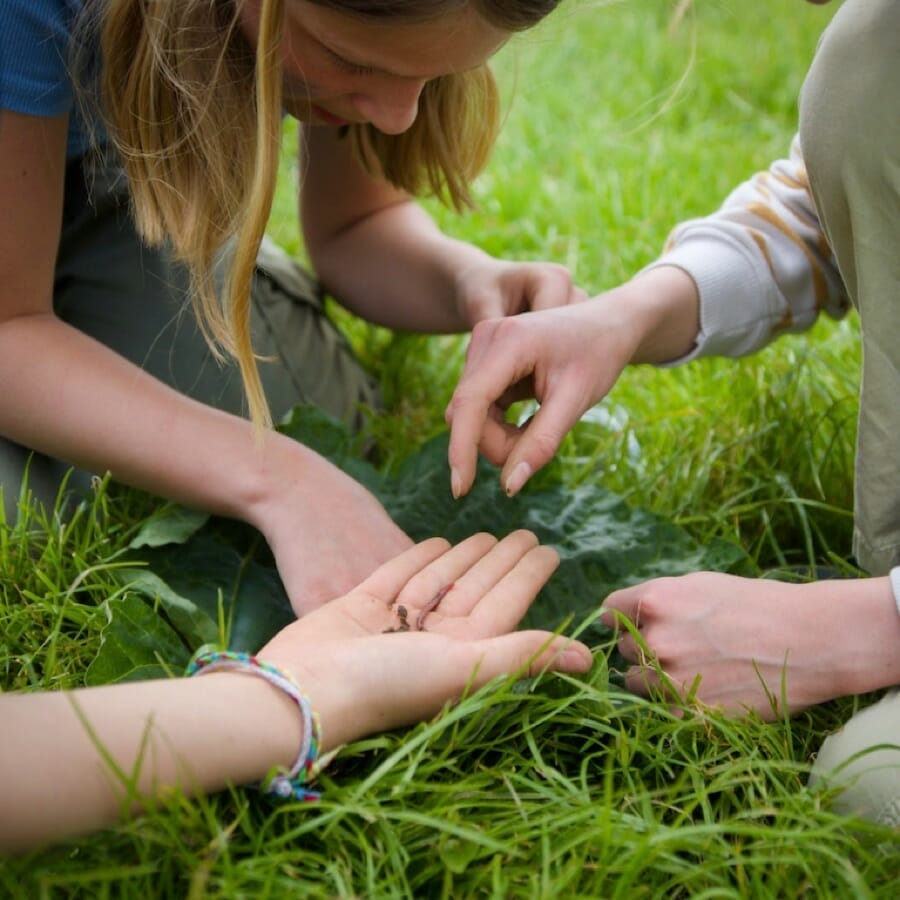Today, we are thrilled to present an insightful interview with Tim, an advocate for land engagement and restoring our connection with nature. Tim’s passion lies in reweaving a caring relationship between people and the land, with a special focus on inspiring young minds to embrace and cherish the natural world.
In this interview, Tim sheds light on his role as the Ashburnham Place Land Engagement lead, where he spearheads initiatives to ignite wonder and appreciation for the environment among people of all ages.
Learn about the difficulties in inspiring the younger generation to care about the environment, the positive effects on students, and the exciting future projects aimed at promoting a sustainable and caring connection with nature.
If you would like to contact Tim, please go here
Watch the video
Interviewer:
Can you tell us about your role
As a land engagement and how do you inspire young people to connect with the land?
Tim:
My role here helps to reweave all ages back into a caring relationship with the land. We offer activities that help young people to notice, engage and feel something for all the things that are found there. We’ve found that young people are genuinely worried about the future and so we want to be a voice of hope by inspiring them to live well closer to the land.

Interviewer:
What types of workshops and activities do you conduct with schools?
Tim:
Once the students are in the outdoor spaces, our focus is on creating a profound connection and a sensory experience rather than solely providing knowledge. We want them to genuinely feel and comprehend what they discover out there. Since most of their time is spent indoors at school, looking at things on the board and listening to teachers, it becomes essential to let them immerse themselves in the outdoors and engage their senses.
We offer a diverse range of activities that aim to ignite a sense of wonder and kindle a passion within them. We engage in activities such as cooking with the produce we find on the land, encouraging discussions and contemplation about our discoveries, and unveiling the marvels of nature. Through these experiences, we aspire to cultivate a deeper understanding and appreciation for the land.

Interviewer:
Can you give us an example of a memorable activity?
Tim
One particular activity that stands out is when we invite the students to dig through the soil, observe the presence of worms, and learn about their significance in nourishing the soil, not only for the plants health but also ours. Following this, we gather vegetables, prepare and cook them, and delight in the process of transforming them from soil to the table. Witnessing how this hands-on experience connects children to the land and enables them to taste and appreciate the journey of food as a gift is a pure joy!

Interviewer:
What impact have you seen
On students who participate in your programs? Have you witnessed any significant changes in their attitudes towards the environment?
Tim:
I’ve received feedback from teachers saying that students who participate in our programs exhibit a newfound sense of wonder and joy whilst also experiencing a renewed restfulness and attentiveness. They are encouraged to be fully immersed in the experience, through all of their senses, and to try being active participants within nature rather than passive listeners. We aim to open their minds to a broader perspective and a deeper understanding of the interconnectedness of all things.
Interviewer:
Have you faced any challenges
In getting young people interested in exploring the land? If so, how do you overcome them?
Tim:
Absolutely, one of the major challenges we encounter is apathy in relation to the land and what surrounds them. Nature is perceived merely as a backdrop or nice scenery without much significance. There is a disconnection from understanding how our lives are interconnected with the life of all things. It’s as if we ‘just eat’, treating food as a mere product and commodity.
This lack of awareness about the interconnectedness and interrelatedness of all things stems from this disconnection. We fail to notice the nature right under our noses and remain oblivious to what is happening around us. Our 24/7 lifestyles keep us disconnected from the patterns and rhythms of the land. To sum this up, we now live in a time where we have never had to know and care so little to enjoy so much.
There is a need to re-establish a deep attachment, care for and belonging to our natural spaces and places. Where we slow and take notice not merely pass through them, live unaware next to or plonk ourselves on top of what has been there for generations.
Overcoming apathy requires touching upon the realm of feelings. Nobody will care about something they don’t know or understand. Experiencing and engaging with nature firsthand is essential to developing a different perspective. Through hands-on experiences, tasting, and actively participating, we can begin to ask ourselves important questions. Where does our food come from? What is the point of nature? How does it affect us? Who are we and where are we going? What is our shared story for the common good of all things?
These experiences push us to contemplate the vision of a good life beyond simply acquiring knowledge for the sake of pursuing material possessions. Challenging the prevailing narratives about life becomes crucial. It is a deeply philosophical, spiritual, and environmental endeavour. Tackling the human caused environmental problems necessitates introspection into our identity, emotions, and aspirations. It is an interconnected journey of self-discovery that aligns ourselves with a sustainable future.


Interviewer:
Can you share any success stories or testimonials
from students significantly impacted by your programmes?
Tim:
Yeah, definitely. I think one of the most powerful testimonials is from a student who initially viewed food as merely something to eat without much thought. However, by the end of our programme, they had tasted and experienced the goodness of food in a profound way. This connection sparked a change in their perception. We ignited something within them that made them realise that food is more than just a means to satisfy hunger or cravings. It goes beyond the marketing messages that says consumption will satisfy your desires.
This transformation in their understanding of food is a true success story. I remember receiving a note from a student who said, “Thank you for telling a better story. So will I”. It encapsulates what we strive to do – to tell a story that is full of wonder, taste, and a sensory experience. Our aim is for students to take this new perspective with them, much like walking down a path and picking up pollen and seed along the way. We hope that by experiencing our programme, something will stick with them, and they will carry it forward to their places. Our goal is not to keep an amazing idea to ourselves but to invite others to come, see, and start their own stories.

Future Goals
Interviewer:
As a “land guy,” what are some future goals or initiatives you hope to undertake to encourage young people to connect further with the environment?
Tim:
Looking ahead, one of our exciting initiatives for this summer is the construction of an outdoor covered space with a kitchen. The idea is to teach among creation, where students can literally step outside and be with nature, gather fresh vegetables and see the animal life that is there, then come inside, wash, chop and cook the vegetables, and even explore the microorganisms in the soil using microscopes or other tools.
Afterwards, we can sit down together and cook on the woodfire. Setting up tables, we can have a leisurely meal and discuss the taste of the food, what makes it good, and contemplate our roles in a shared life together.
Our aim is to move beyond education, that relies on talking about something viewed through a screen or being told about it. In our approach, we want to directly provide children with the skills to engage with nature themselves. It’s not just about receiving from the land but also giving back to it. We will show them how to dig, plant, encourage rich diversity, compost, and forage safely and responsibly.
We’ll guide them to relevant resources and introduce them to inspiring voices.

Interviewer:
What advice would you give to others
Who want to inspire and engage young people in exploring the land and understanding the importance of the environment?
Tim:
I believe the key is to ignite a sense of wonder, joy, and fun in the outdoors. It’s essential to create experiences that engage all their senses and elicit genuine expressions of amazement or awe. No matter how much knowledge or diverse experiences we offer, if there isn’t that excitement and wonder during the experience, it won’t connect with their feelings.
This applies to children and anything else. Simply exposing them to the outdoors is no longer enough; we also need to share what we’ve learned and pass it on, especially from older generations. We shouldn’t solely rely on schools to teach these lessons.
It’s about connecting what they learn at school with what they experience at home and in different contexts. However, if there isn’t that spark of excitement and wonder, it becomes something they do just because they’ve been told to do it. For example, cleaning up a beach and learning about the impact of plastic on animals is good, but unless they have enjoyable experiences on the beach, swim in the sea, build sandcastles, spot seals, explore rock pools, catch crabs in buckets, they won’t truly connect with the environment. It’s about creating transformational experiences that change them forever.
That’s our goal, to provide those experiences that go beyond functionality and transaction and become truly transformative. It’s how we inspire and engage young people in exploring the land and understanding its importance.


Interviewer:
How can people get involved or support what you’re doing here?
Tim:
There are several ways people can get involved and support our work. If someone has an idea or wants to collaborate, they can reach out to us. We are open to various forms of engagement, including volunteering, recommending schools or organisations, and sharing experiences.
Additionally, we welcome funding support, but we also encourage people to experience what we do firsthand and witness the impact. Our aim is to create a community that shares our vision and is inspired to carry it forward by gifting it onto others. We believe in the power of telling a good story, that is wondrous and hopeful, allowing all who come and see, taste, touch, hear and smell it to go on and tell it to others. To come and see and grow their own stories.
If you would like to contact Tim please go here








